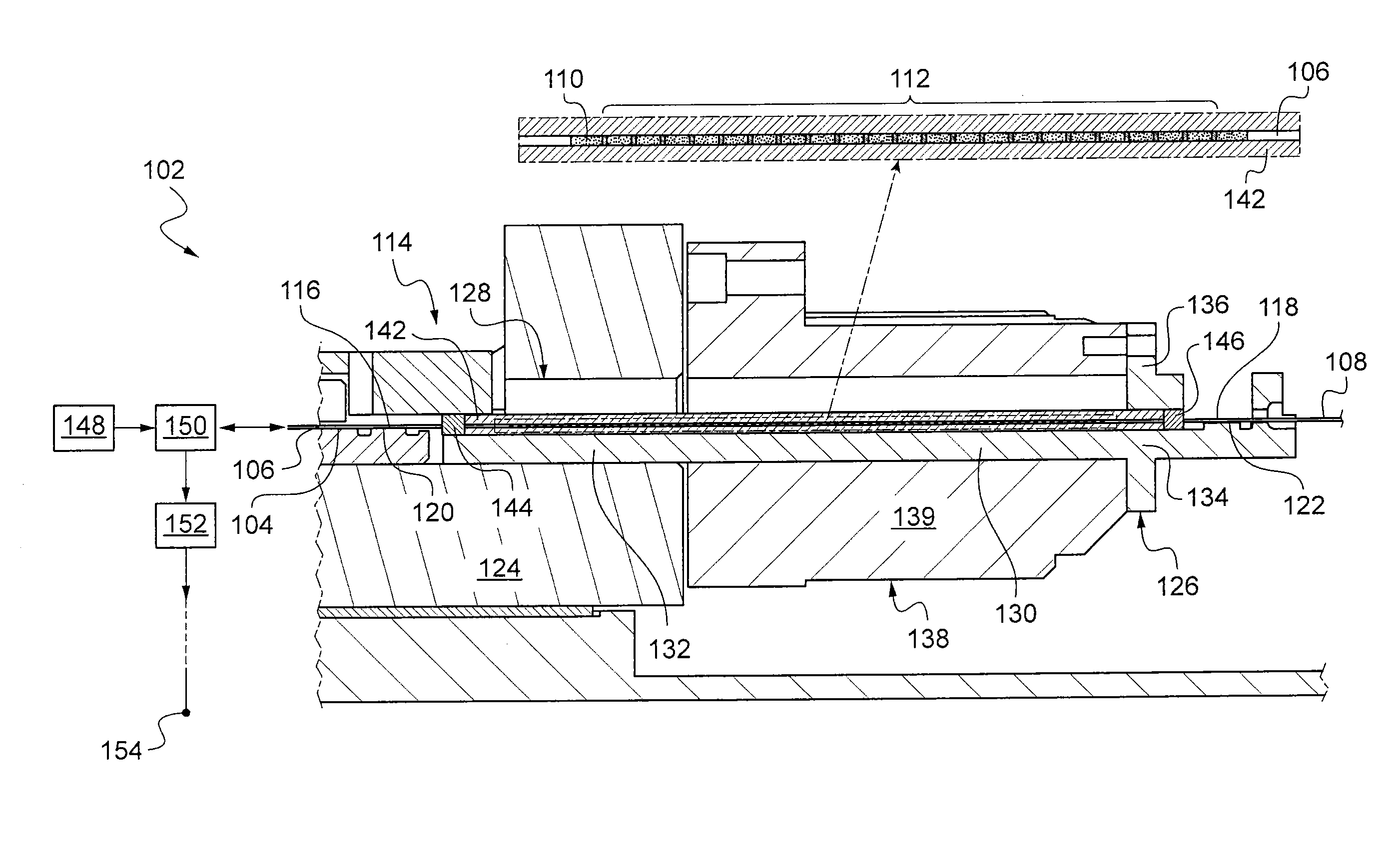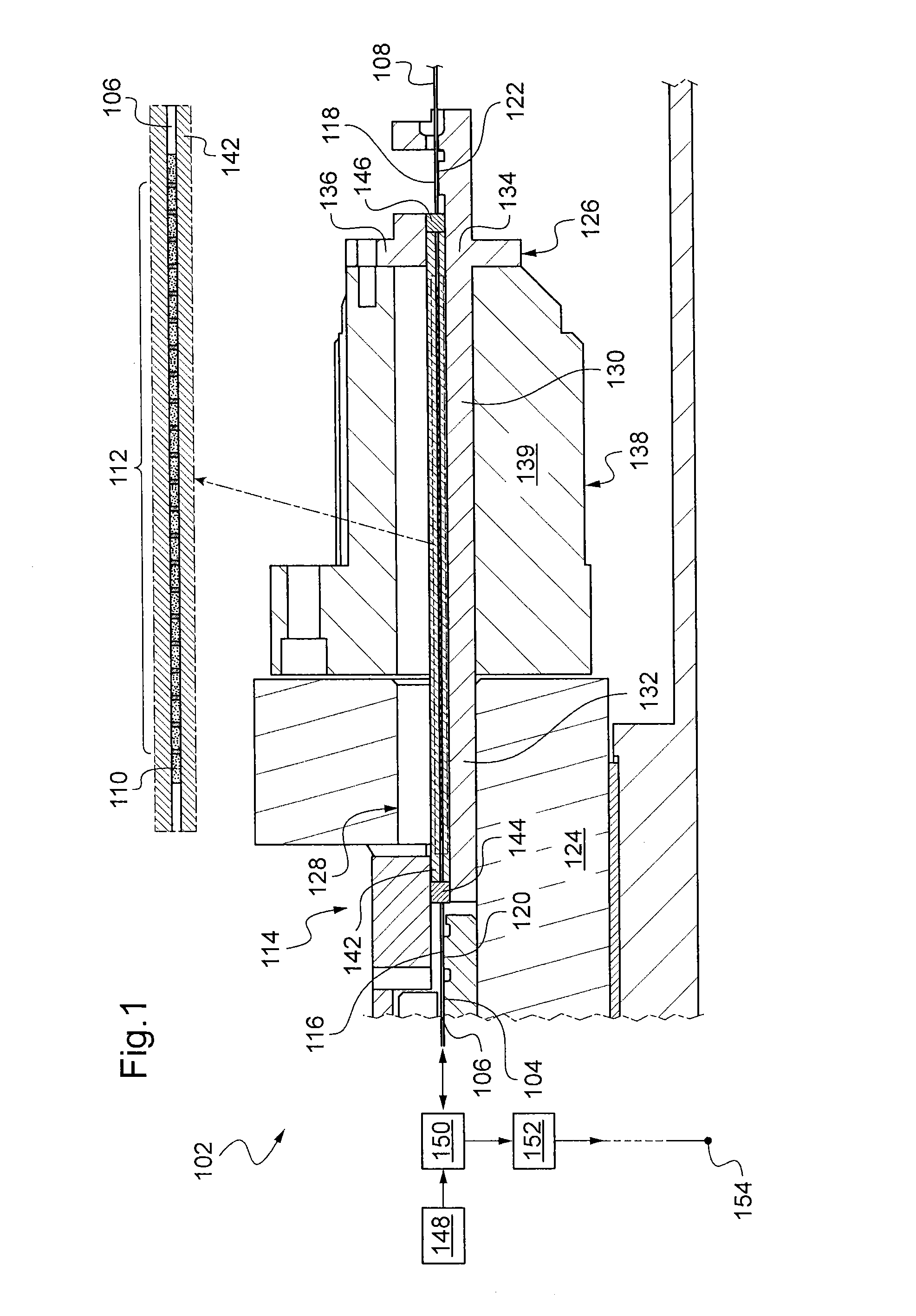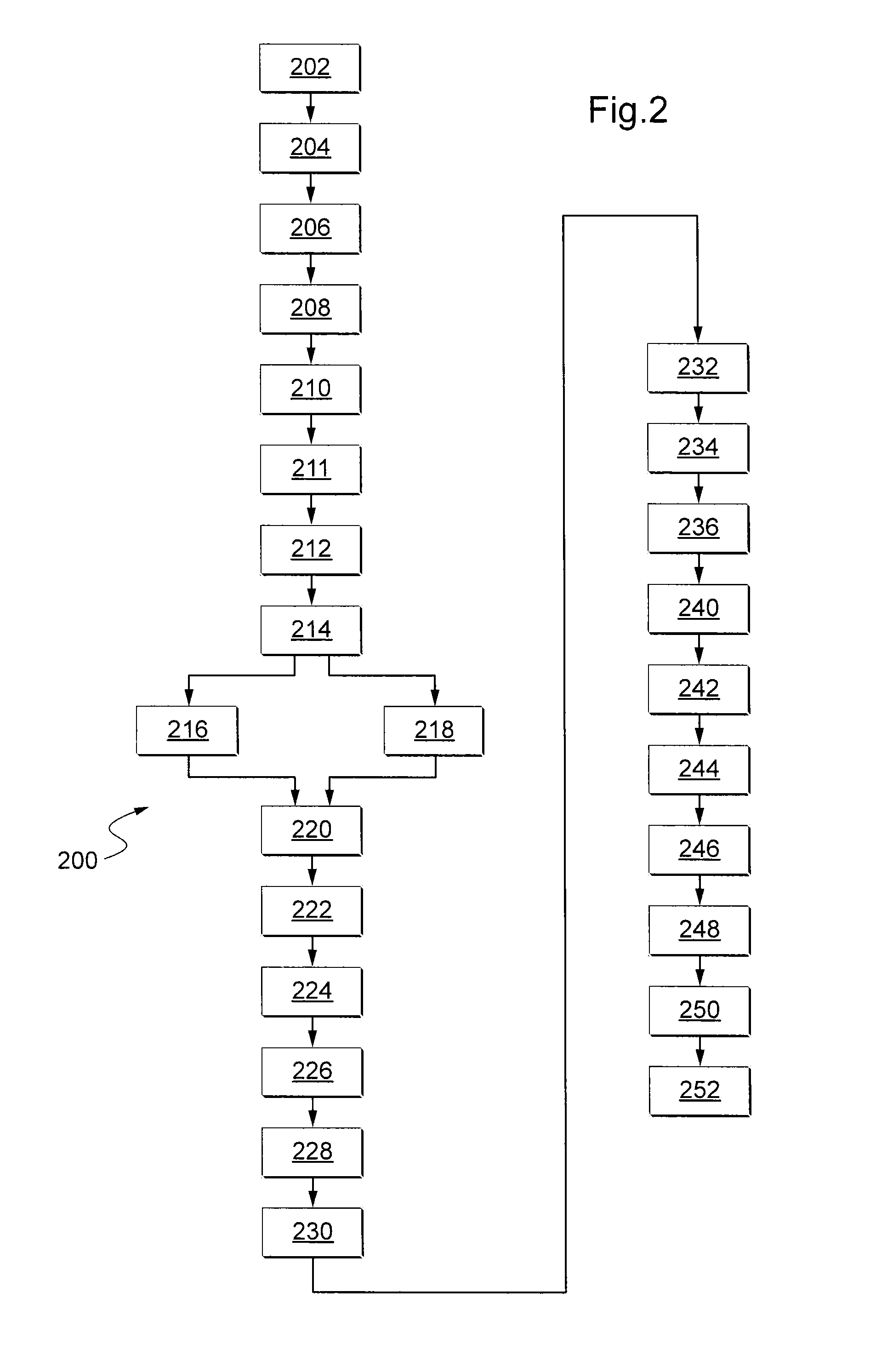Method for manufacturing an optical fibre laser
a technology feedback loops, which is applied in the direction of manufacturing tools, instruments, optical elements, etc., to achieve the effect of discharging the heat produced in optical fibres and ensuring the stability of optical fibre lasers
- Summary
- Abstract
- Description
- Claims
- Application Information
AI Technical Summary
Benefits of technology
Problems solved by technology
Method used
Image
Examples
Embodiment Construction
[0031]With reference to FIG. 1, an optical fibre laser 102 implementing the invention will now be described. In the example described, the laser 102 is a longitudinal single-mode laser.
[0032]The laser 102 firstly comprises an optical fibre 104. The optical fibre 104 has, in a manner known per se, a core and cladding around the core, the refractive index of the cladding being lower than that of the core. The core and cladding are encased by a protective sheath. The optical fibre 104 is provided with two ends 106, 108, of which a first 106 is intended to allow light to flow in both directions of propagation: to and from the optical fibre 104. The optical fibre 104 has, between the two ends 106, 108 thereof, a doped section 110 for, in a manner known per se, absorbing at least a portion of the light received by the first end 106 of the optical fibre 104 and emitting light, particularly to said first end 106, the light emitted generally having a continuous wavelength range. The optical ...
PUM
| Property | Measurement | Unit |
|---|---|---|
| torsion angle | aaaaa | aaaaa |
| wavelength | aaaaa | aaaaa |
| wavelength | aaaaa | aaaaa |
Abstract
Description
Claims
Application Information
 Login to View More
Login to View More - R&D
- Intellectual Property
- Life Sciences
- Materials
- Tech Scout
- Unparalleled Data Quality
- Higher Quality Content
- 60% Fewer Hallucinations
Browse by: Latest US Patents, China's latest patents, Technical Efficacy Thesaurus, Application Domain, Technology Topic, Popular Technical Reports.
© 2025 PatSnap. All rights reserved.Legal|Privacy policy|Modern Slavery Act Transparency Statement|Sitemap|About US| Contact US: help@patsnap.com



